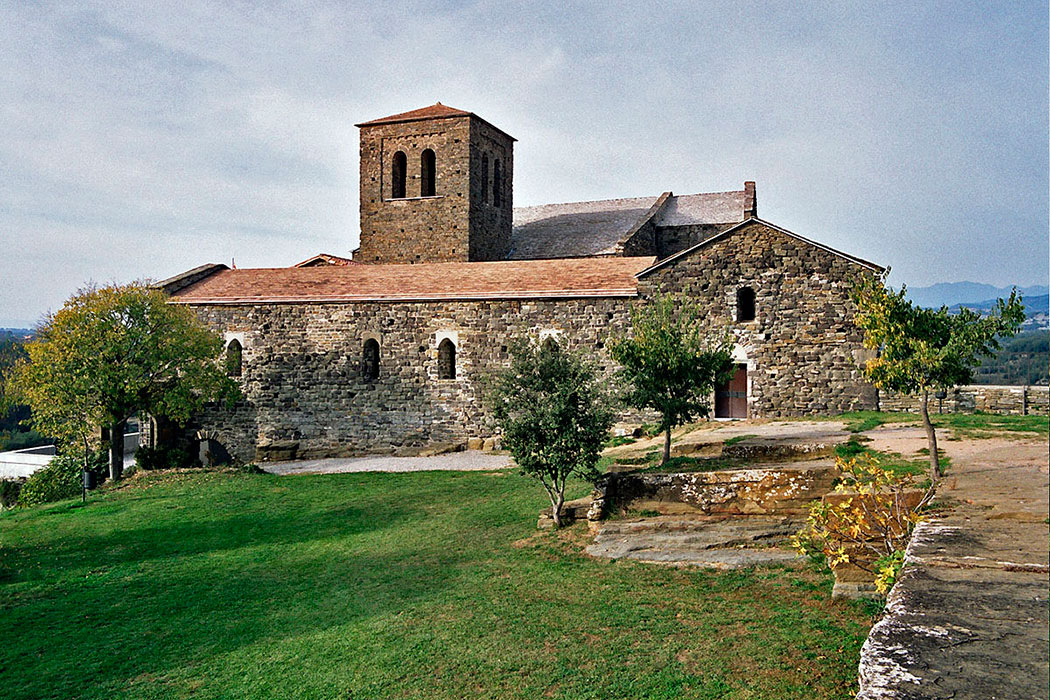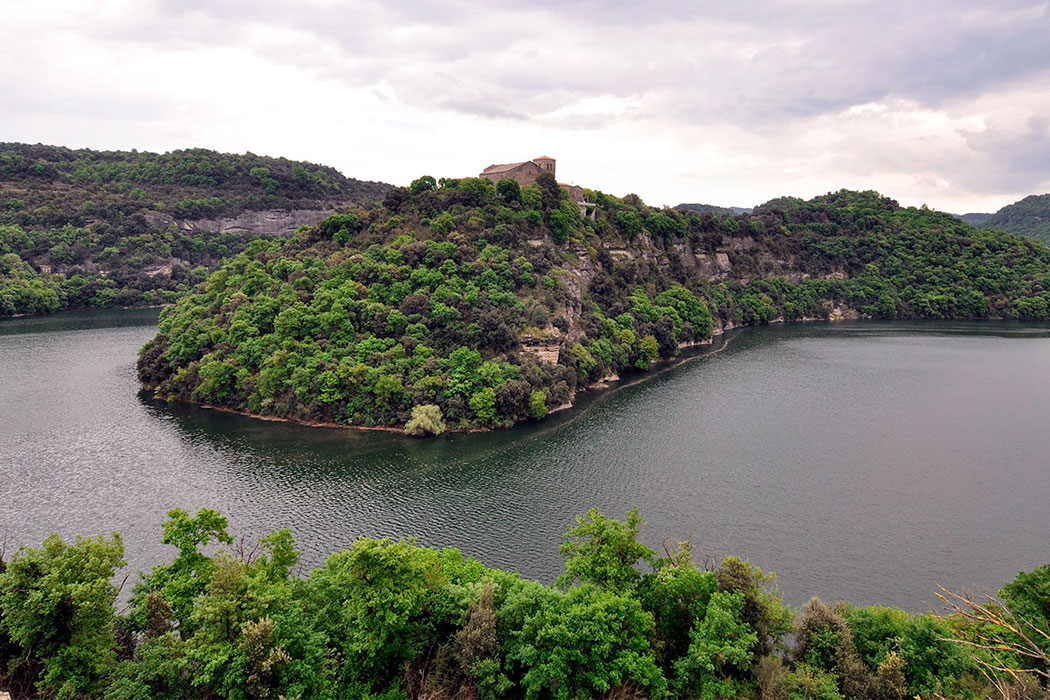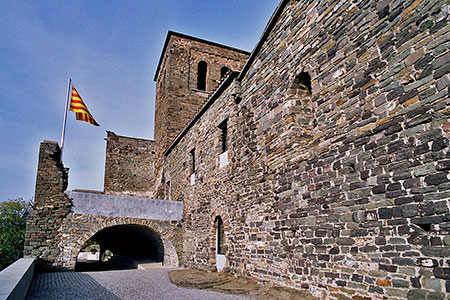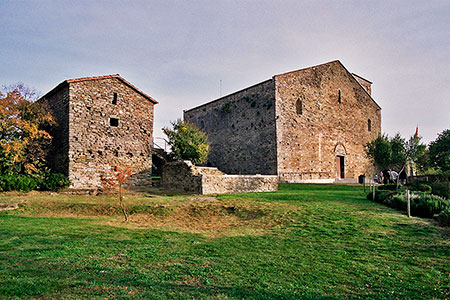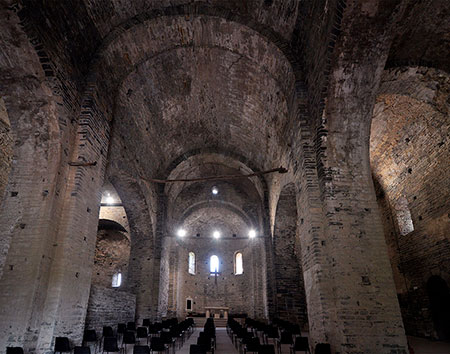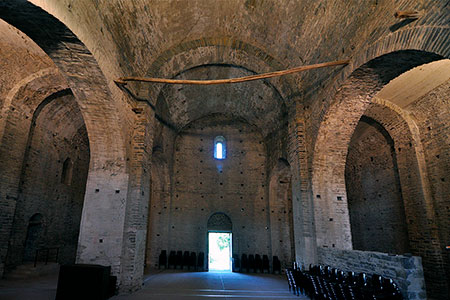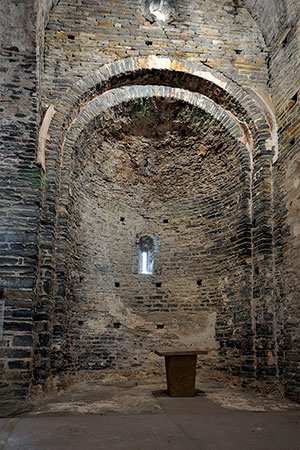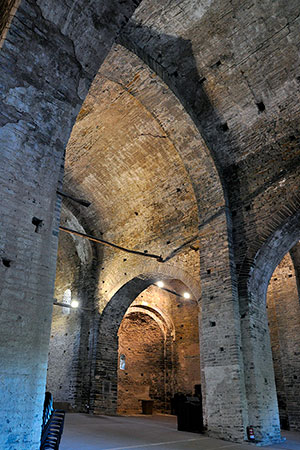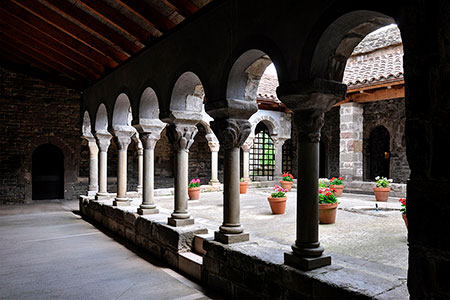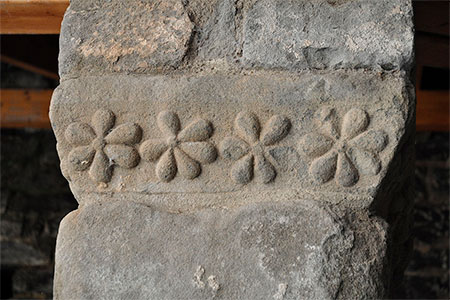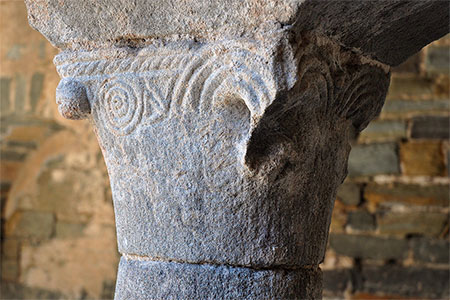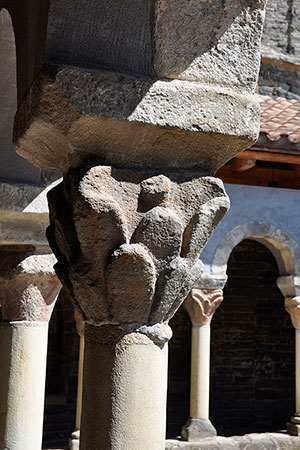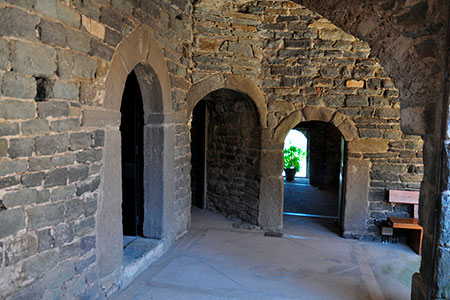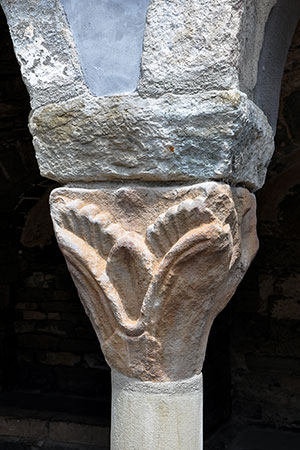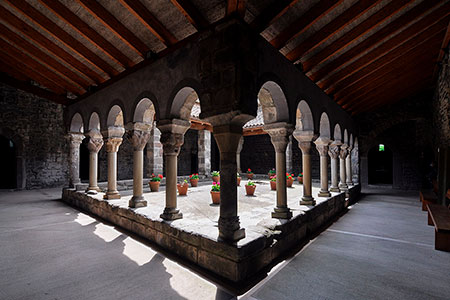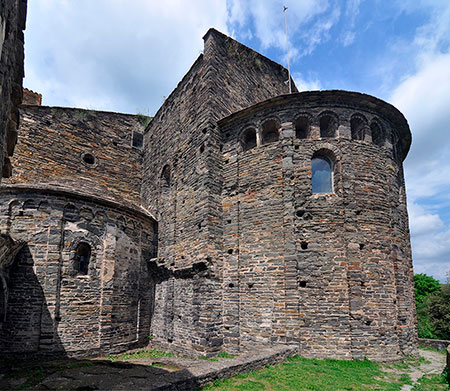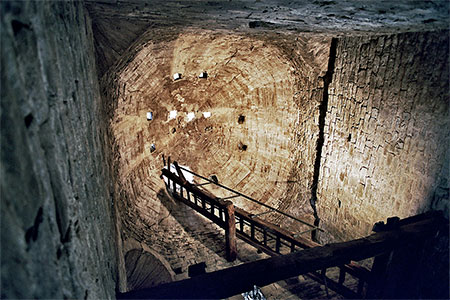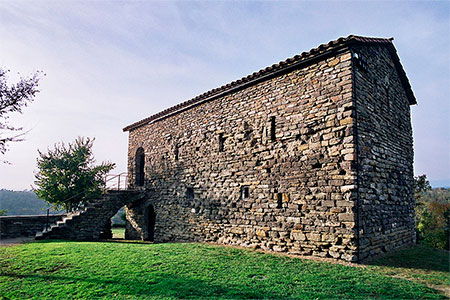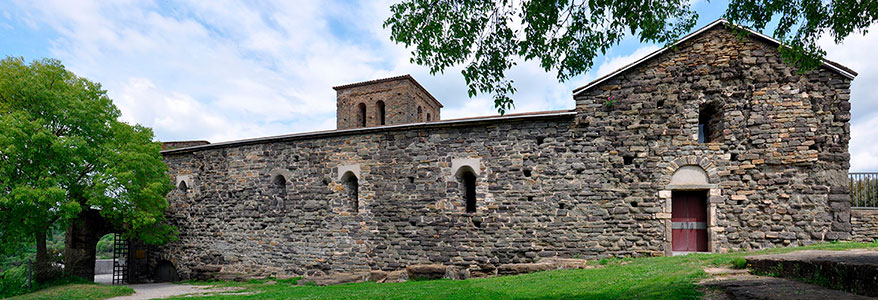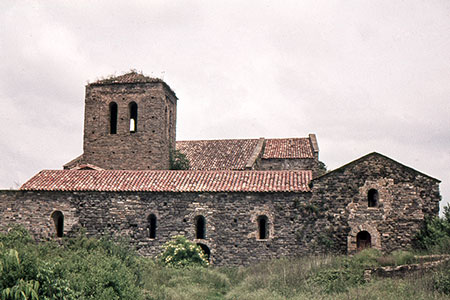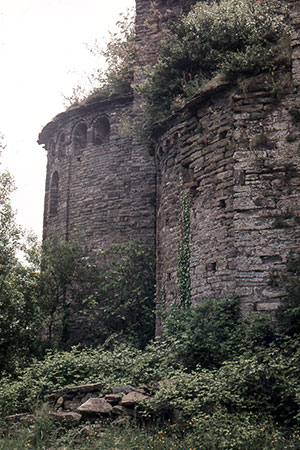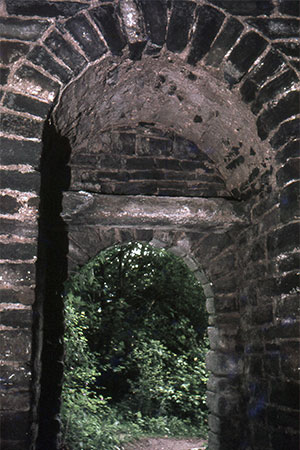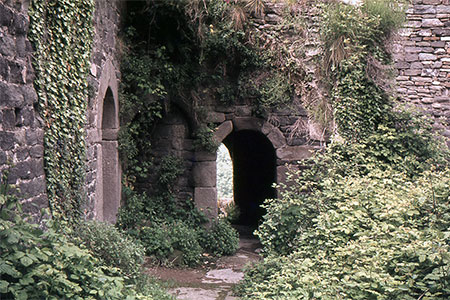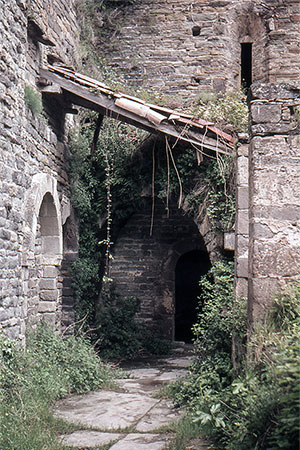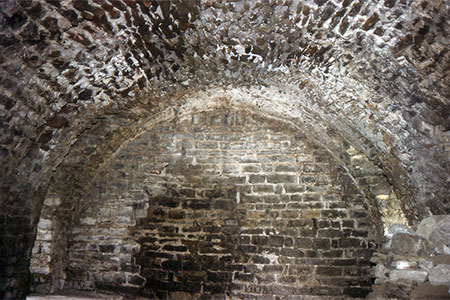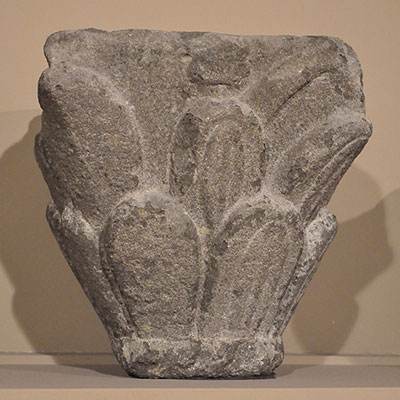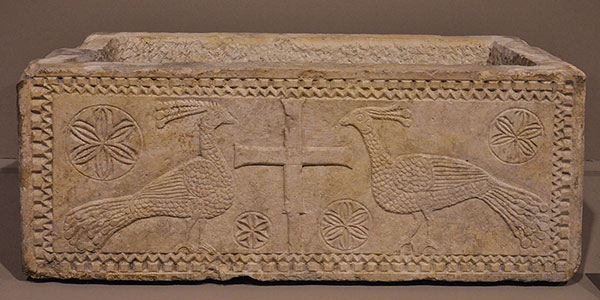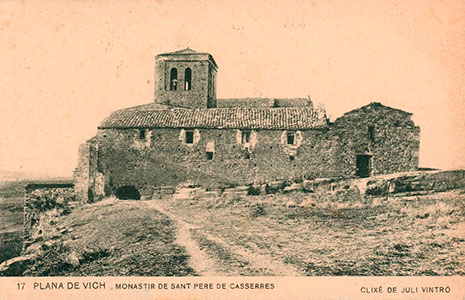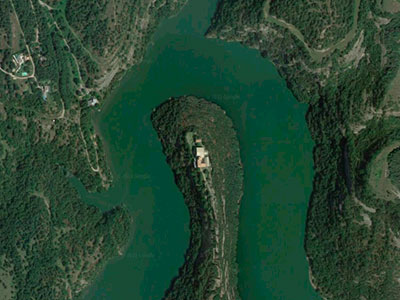Monastery of Sant Pere de Casserres
Castroserras / Castrum Serras / Cluniac priory of Casserres
(les Masies de Roda, Osona)
The monastery is located on a peninsula surrounded by the river Ter, which is dammed here by the Sau reservoir. The church and the monastery are bordered to the east and west by the rocky walls of the cliff, which slopes down to water level.
At the end of the 10th century, this territory was under the rule of the Viscounts of Osona. In 1005, Countess Ermetruit, who had been widowed by Count Guadall II in 980, decided to establish a monastery in the chapel of Casserres Castle (Castle of the Serres), dedicated to Saint Peter. Count Ramon Borrell of Barcelona took part in this act and added other lands to the foundation to provide and secure the new monastic house. New contributions were later added to the initial endowment.
Like many other places of popular devotion, Casserres also has a legendary story, that of the Infant Sant, which explains its origins. This episode, although it refers to the beginnings of the monastic establishment, is not mentioned until the middle of the 16th century and tells us that three days after the birth of a child, he spoke, prophesied that he would die very soon, and indicated that his body should be placed on a horse and that wherever he went and stopped, a monastery should be built and dedicated to Saint Peter. Other versions identify this infant as a member of the Viscount family. The body of the Infant Sant was the object of much devotion in the monastery for years, despite the opposition of the ecclesiastical authorities. Lately, in 1966, the ‘relic’ was stolen, only to be recovered in 1988.
Despite the document of 1005 in which the viscountess created the monastery of Sant Pere, it is not until 1010 that we find mention of the first abbot of the house: Eicfred. In the following years, the abbey became a place of some importance, as can be seen in the existing documentation that refers to it. The place was also the beneficiary of bequests and other donations, especially from Viscountess Engúncia, daughter-in-law of the foundress. When the monastery was founded, the pre-existing church dedicated to Sant Pere was in a poor state of repair and the viscountess house began the construction of a new building, a work that was prolonged over time and must have been consecrated in 1053.
The viscounty of Osona, which was then already known as Cardona and had moved its seat to Cardona, was receptive to the Cluniac reform and in 1079 Ramon Folc I of Cardona donated Casserres to the monastery of Cluny (Saône-et-Loire). This Burgundian abbey gathered many possessions around Sant Pere de Casserres, assets that extended over a wide geographical area. Among these possessions, special mention should be made of the priories of Sant Pere de Clarà (Maresme, 1080) and Sant Ponç de Corbera (Baix Llobregat, c. 1096), as well as several churches. One of them, Santa Maria de Tagamanent (Vallès Oriental) was ceded in 1148 to Casserres and an attempt was made to establish a priory there, but this may never have happened.
At that time, it had a prior, ten or twelve monks, four or five priests and several servants and lay brothers. Many noble houses of the area, such as the Savassona, the Tavertet, the Castilians of Cabrera, etc., protected it and were buried there. During the 14th century it began to decline due to economic difficulties, the Black Death and the establishment of a commendatory regime (1376), left the house badly damaged both financially and in terms of the physical state of the buildings. Already in the 15th century, the country suffered the effects of the political situation, as well as the effects of several earthquakes between 1425 and 1448. The priory of Casserres was maintained during the 16th century, although it may well no longer have a community.
Due to the poor state of the establishment, in 1573 the Jesuits of Betlem de Barcelona took over the monastery and its possessions, which they kept until 1767, when it passed to the Crown and was sold to private individuals (1773). During the 20th century, the historical importance of the site was appreciated and several initiatives led to its protection, its transfer to public ownership and its restoration.
- GAVÍN, Josep M. (1984). Inventari d'esglésies. Vol. 15. Osona. Barcelona: Arxiu Gavín
- JUNYENT, Eduard (1960). Catalogne romane. La Pierre-qui-Vire: Zodiaque
- MONTSALVATJE, Francisco (1910). El monasterio de San Pedro de Casserras. Girona: Dalmau Carles
- PALLÀS I ARISA, Víctor (1998). El Cos Sant. Sant Pere de Casserres entre el mite i la realitat. Barcelona: Busca Ed.
- PLADEVALL I FONT, Antoni (1984). Catalunya romànica. Vol. II. Osona I. Barcelona: Enciclopèdia Catalana
- PLADEVALL I FONT, Antoni (20014). Sant Pere de Casserres o la presència de Cluny a Catalunya. Fundació Caixa Manlleu
- PUJADES, Josep (sd). Memòria de l'excavació arqueològica realitzada a l'antic monestir de Sant Pere de Casserres. Generalitat de Catalunya
- SOLDEVILA, Teresa (1998). Sant Pere de Casserres. Història i llegenda. Vic: Eumo
- SOLDEVILA, Teresa (1999). Sant Pere de Casserres. Pels camins de la història. Vic: Eumo
- SUBIRANAS FÀBREGAS, Carme (2005). Memòria d'intervenció arqueològica a l'església del monestir de Sant Pere de Casserres. Manresa
